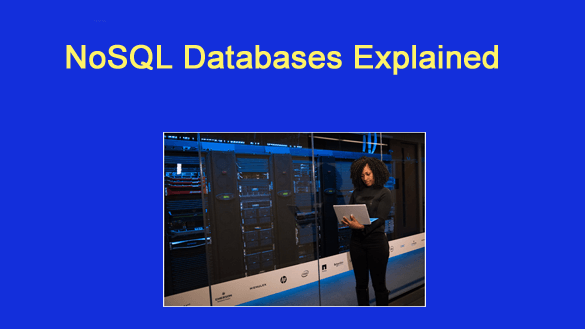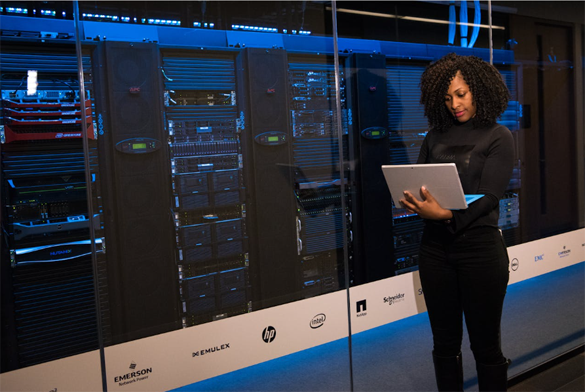 Apps and websites are expected to work instantly nowadays, respond to user behavior in real time, and handle everything from videos to social connections to shopping carts.
Apps and websites are expected to work instantly nowadays, respond to user behavior in real time, and handle everything from videos to social connections to shopping carts.
As of February 2025, it is estimated that 5.56 billion individuals worldwide are internet users, which amounts to 67.9% of the global population. Of this total, 63.9% of the world’s population is a social media user.
This is leading to an enormous amount of available data that can be used by companies and traditional databases, while reliable, they often struggle to meet these expectations at scale. That’s where NoSQL databases come in.

NoSQL (short for “Not Only SQL”) databases are becoming increasingly popular as modern data demands push the boundaries of what traditional relational databases were designed to handle. As users stream movies, update social feeds, or sync smart home devices, behind the scenes, NoSQL systems are quietly powering these seamless experiences. With their ability to handle vast, varied, and fast-moving data, NoSQL databases are shaping the way today’s technology operates — and they’re likely touching your digital life more than you realize.
What Are NoSQL Databases?
NoSQL databases are non-relational data systems designed to store, retrieve, and manage data that doesn’t fit neatly into rows and columns. Unlike traditional SQL databases, which use rigid schemas and structured tables, NoSQL offers a flexible, scalable approach to data modeling. It’s ideal for applications where data formats evolve quickly or come in unpredictable shapes — think user-generated content, IoT sensor data, or real-time analytics.
Key characteristics of NoSQL databases include:
• Schema flexibility: You can store documents with different fields without altering a global schema.
• Scalability: Designed for horizontal scaling across distributed systems.
• High performance: Optimized for rapid reads and writes at internet scale.
NoSQL isn’t a single technology but an umbrella for several types of databases that operate differently based on the use case.
A Brief History of NoSQL Databases
While the term “NoSQL” was originally coined in 1998, it wasn’t until the early 2000s that it took on its modern meaning. As internet applications exploded in complexity and scale, developers began to feel the limits of traditional relational databases. These systems weren’t built to handle the volume and diversity of data generated by web-scale services like social media platforms, e-commerce giants, and streaming apps.
A turning point came as companies began designing distributed systems that prioritized speed, availability, and scalability, often at the expense of strict consistency.
By the 2010s, different types of NoSQL databases emerged and the acceptance of NoSQL became widespread, with businesses becoming more data-driven. As outlined by this guide to NoSQL databases, from this shift emerged a new wave of databases optimized for modern workloads. This new generation of data storage solutions introduced data models like document, key-value, column-family, and graph, each offering unique advantages for specific challenges.
The rise of cloud computing, mobile apps, and big data further accelerated NoSQL’s adoption. By embracing flexibility and scale, NoSQL databases enabled developers to build systems that could handle real-time interactions, dynamic content, and global reach.
How NoSQL Databases Work
NoSQL databases come in various forms, each designed to address different data management challenges:
1 – Document Databases
These store data as documents, typically using JSON or BSON formats. Each document can have its own structure, making it easy to represent complex objects. They’re commonly used in content management systems and real-time applications.
2 – Key-Value Stores
The simplest form of NoSQL. Each piece of data is stored as a key with an associated value. This model is extremely fast and is often used for caching or session management.
3 – Wide-Column Stores
These resemble relational databases in layout but allow for flexible columns per row. Ideal for analytical workloads, wide-column databases power recommendation engines and time-series data.
4 – Graph Databases
These represent data as nodes (entities) and edges (relationships). They excel in scenarios where connections matter, such as social networks, fraud detection, or recommendation systems.
Many NoSQL systems are designed to scale horizontally, meaning they can distribute data across multiple machines. They often embrace eventual consistency, which means data is quickly available across systems, though minor synchronization delays may occur.
Why NoSQL Databases Matter to You
You don’t have to be a developer to feel the impact of NoSQL databases. From your favorite streaming platform to the way your online cart remembers products, these databases make your digital life smoother:
• Faster app responses: NoSQL enables real-time feeds and recommendations.
• Offline-friendly apps: Many NoSQL systems power mobile apps that sync data when you’re back online.
• More personalization: By handling diverse user data efficiently, NoSQL helps apps adapt to your preferences.
• Smarter devices: IoT systems use NoSQL to process high volumes of real-time sensor data.
Behind the scenes, your interactions are shaped by systems designed to be flexible, fast, and scalable — qualities that define NoSQL.
Pros and Cons of NoSQL
Pros
• Scalability: Handle millions of users and requests with ease.
• Flexibility: No rigid schemas means faster development.
• Performance: Ideal for high-speed, high-volume applications.
Cons
• Less standardization: No single query language like SQL.
• Complex queries: Some NoSQL databases are less suited for joins or aggregations.
• Consistency trade-offs: Eventual consistency can introduce complexity in some scenarios.
The Future of NoSQL
The future points to a continued blending of database models. Many modern systems are embracing multi-model databases that support both relational and non-relational approaches. As cloud-native development grows and applications demand real-time and global access, NoSQL databases are set to become even more integral to the digital world.
For everyday tech users, understanding NoSQL isn’t just about knowing how data is stored — it’s about appreciating the technology behind the speed, intelligence, and personalization you experience every day.
For daily doses of practical, easy-to-follow tech tips, visit the rest of the site.